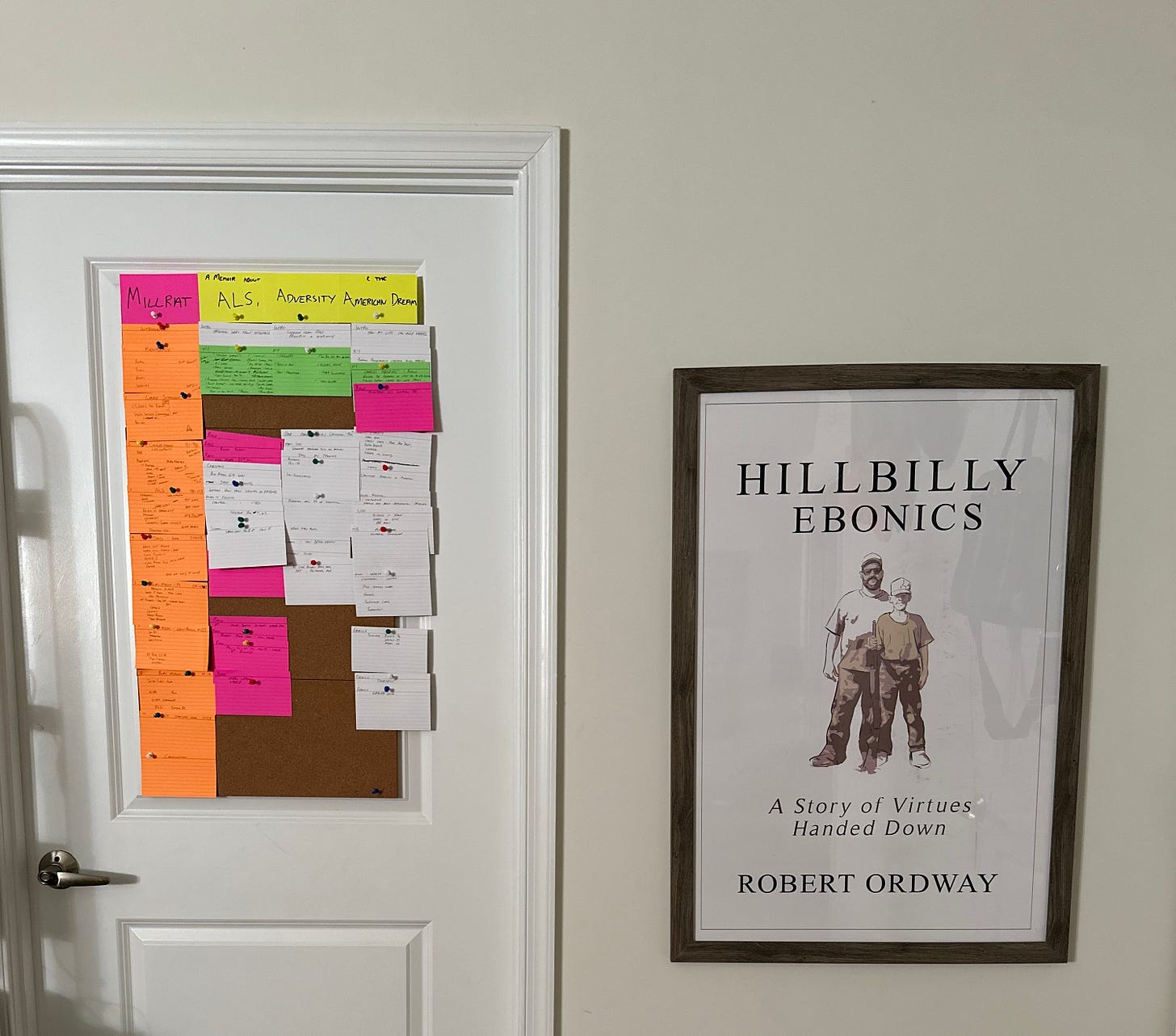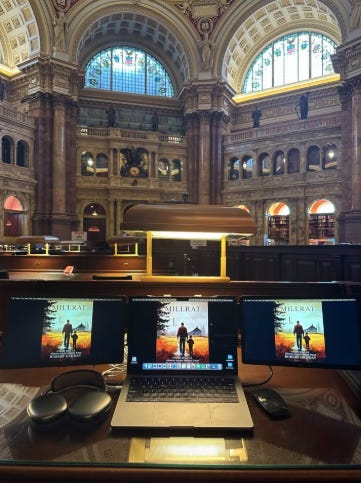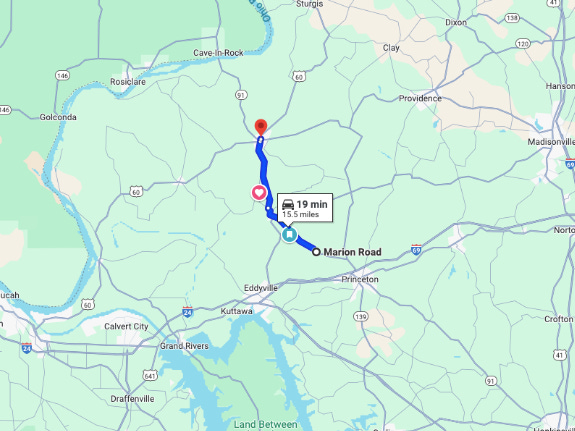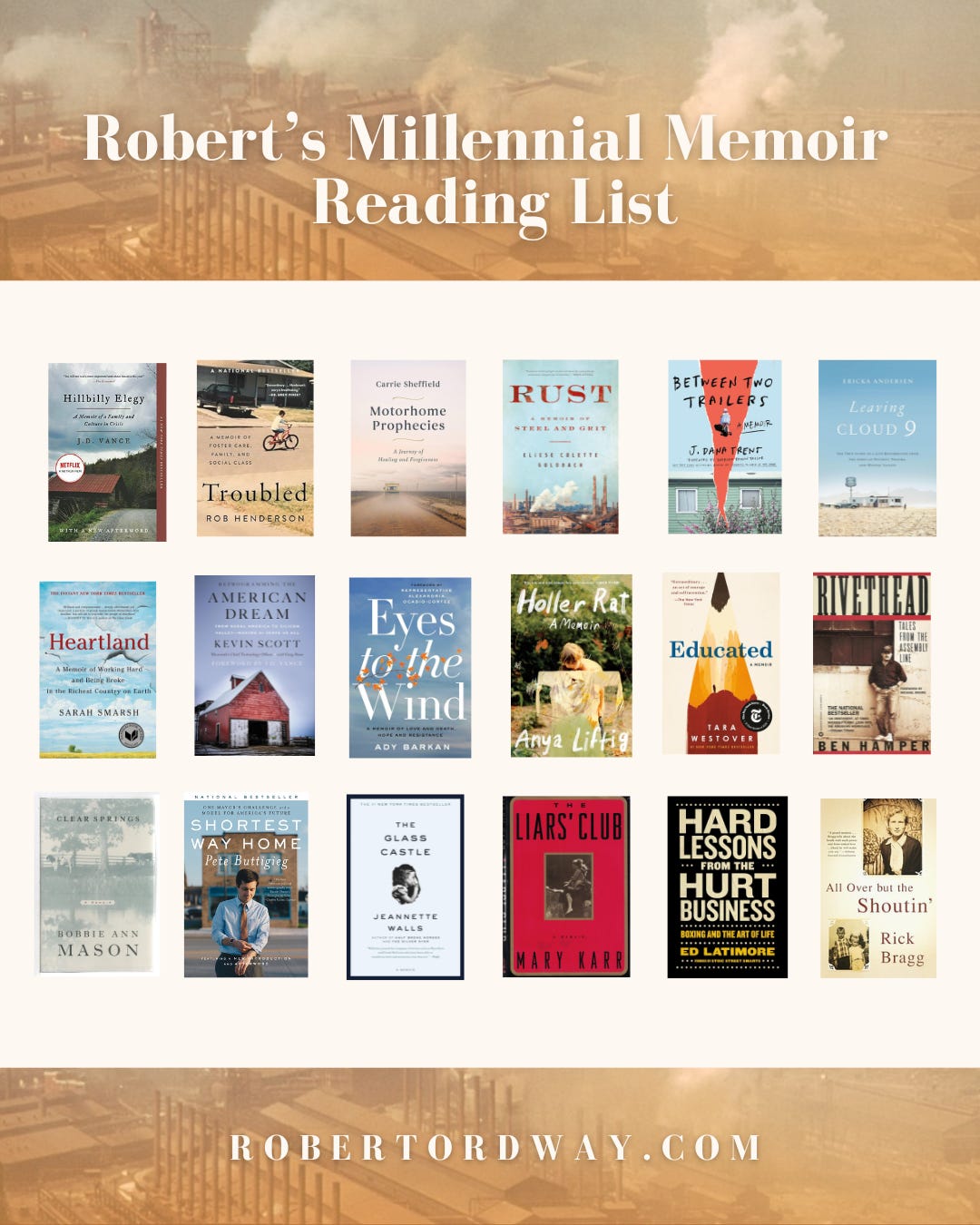The Elder Millennial’s Memoir - Part 2 of 2
A 20 Year Work-In-Progress
Okay, I’m really going to finish this book!
After shutting down the clothing store and moving to DC in January 2017, I was freed from several commitments; however, landing in the legal center at the Heritage Foundation during the Gorsuch nomination proved how ill-equipped I was at technical writing… and writing fast. Given that I wasn’t raised in the church, my book research continued with some deep dives on both Christianity and masculinity as they tied into my family’s southern Culture of Honor. (Many are listed on my Goodreads.)
It was not on my bingo card, but by happenstance, I landed a job in the U.S. Senate two years later. During my interview, I told the incoming chief of staff I was writing a book about my Dad. After using one of Dad’s favorite phrases, “skin in the game,” several times and citing my political hero Mitch Daniels and his concerns related to the federal budget, I was hired on the spot. With no federal policy background, the learning curve was steep, so extra hours at work, along with an annoying Metro train commute home, meant the book would quickly find its way back to the back bench.
When COVID-19 hit a year later, it felt like I was always working, as emails came from every direction and at all hours of the night. With everything on lockdown, I took up cycling as a way to get out of the house, but it also pulled my attention back to the book. That summer, I delivered a commencement address to the graduates of my alma mater. It was an opening act from my book to express sentiments about the world through the lens of my Kentucky ancestors.
The Art of Writing
I was a mess with all of my handwritten notes, Word Documents, Apple Notes, Google Keep, and the like. As a supporter of fellow Millennial author Ryan Holiday, I adopted his Notecard System to organize my thoughts and incorporate many concepts from the books I've read over the years.
The problem was that every time I left home to work at a coffee shop, there was no way to bring my corkboard along, much less my deck of notecards, so the writing was all over the place. All that changed when I came across the software Scrivener. It completely changed my confidence. The digital binder, note cards, corkboard, and outline are all one and the same, which allows fluidity between the organization of ideas and drafts.
I finally started talking to book agents, and they told me that if I wanted to land a traditional book deal instead of self-publishing, I would need a book proposal, so I picked up a book on the subject. This is essentially a business plan to illustrate “how this book is going to make money”... that is, for the publisher, of course.
New York Times Bestselling book agents will give you EXACT OPPOSITE advice which is frustrating so I started reaching out to friends. This is when the Chief of Staff of (then) Secretary Carson connected me with his book agent, Sealy Yates who is most well known for published the OG Christian book on masculinity, Wild at Heart. After telling him my story, Sealy sent me of another book he published that has continued to shape my faith, The Luckiest Man: How a Seventeen-Year Battle with ALS Led Me to Intimacy with God. I ended buying online courses from him through www.AuthorCoaching.com.
While working through my proposal, I came across one required section called chapter summaries. Ryan Holiday suggested I connect with his friend Tucker Max’s company, Scribe, a self-publishing company put on the map by David Goggins’ memoir, Can’t Hurt Me. I bought their book, The Scribe Method, but was unable to record and “talk my way” through the book draft, much less a summary. I realized the only way to get it done was to bang out an entire draft of 85,000 words, then back into the summaries. This took a year, working every Saturday at the Library of Congress. Some of my Substack pieces are pulled from that draft as a way to test pilot a “proof of concept.” I borrowed this practice from one of my favorite NYT Bestselling authors, Nassim Taleb, who often put working drafts online.
Vance’s book inspired so many others to write their own stories that I’ve said many times there should be a section at the bookstore called ‘Millennial Trauma Memoir. ’ Storytelling is part of my family’s southern culture, but writing has never been my thing. It’s not theirs either, as I’ve traveled to Kentucky several times on fact-finding missions only to learn the Ordways didn’t write a whole lot down in the 150 years they spent within a few square miles between two counties.
Book proposals also require a section on “sales comparatives” to demonstrate that a book is similar to others in terms of its market appeal, while also being distinct and able to stand on its own. Beyond that, writing prose is unique to each person, so I decided to dive into other memoirs for further depth and analysis. I hope you’ll enjoy this list with little blurbs about each and how they have informed or helped me along the path.
Currently, my book proposal is being revised for my target audience. The first version, completed last fall, landed the work too far into the Christian Self-Help category. While there are strong faith-based themes interwoven throughout the book, my thesis is more geared to the complex yet growing multiethnic working class in which I was raised, and runs parallel to the story of my Dad’s values and parenting.
Back in 2012, I’d settled on Hillbilly Ebonics and fixated on the title, but now it was too close to Hillbilly Elegy. After 2016, there were more “hillbilly” memoirs out there, such as Hillbilly Odyssey and Revolutionary Hillbilly. In 2021, I changed the working title to Millrat because it incorporated not just my Dad but all blue-collar working-class blacks and whites, along with the more than 50 ethnicities that arrived within years of the founding of Gary, Indiana. Despite Millrat being an all-encompassing derogatory term, it is unifying, as downtrodden people have always found a way to turn stereotypes and discrimination into badges of honor. For instance, people in Northwest Indiana are from the Calumet Region and referred to as Region Rats. Kids from my high school, River Forest, are often referred to by rivals as River Rats.
With this broader look, including the people both Dad and I were raised with, along with the generations that came before us, I will be re-pitching a new book proposal to agents and publishers this fall. Steel changed the world during the 20th century and was made by people of all kinds. It is my duty to tell the world about the grit and resilience of those folks..
Regardless of your views about J.D. Vance, his politics, or his story, agents have told me time and time again that his writing is king and that his memoir continues to inspire the completion of my work. For those looking for diverse perspectives on his book, several are included in Appalachian Reckoning: A Region Responds to Hillbilly Elegy (2019).
Stay tuned for the next 2-part series, as I’ve taken extra time to compare my life to Hillbilly Elegy (Part 1), add cultural commentary to the book from my own research along with a list of those books. (Part 2).





